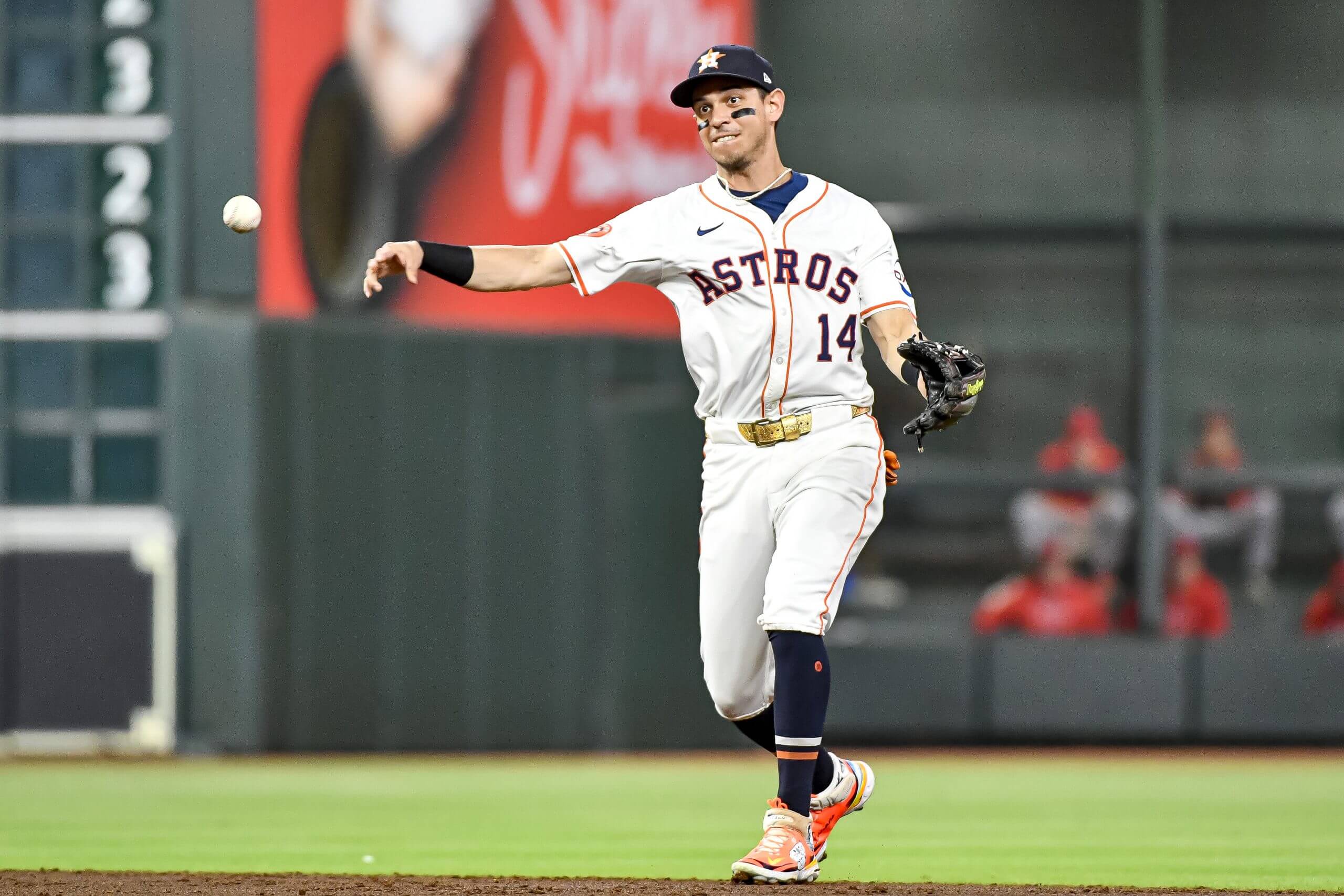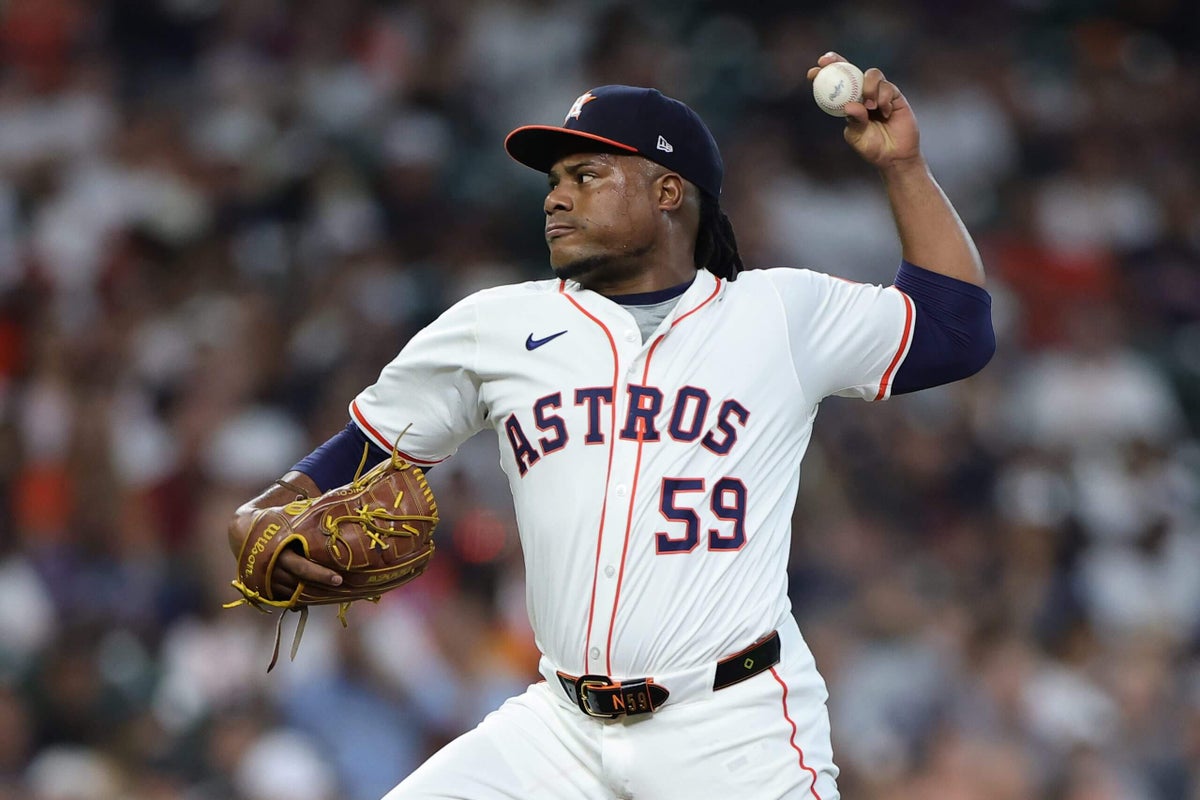For the second consecutive season, Houston Astros owner Jim Crane crossed into what had previously been unfamiliar territory, exceeding the luxury tax in pursuit of a playoff spot. Never in the first 12 years of his ownership tenure had Crane paid penalties for crossing the threshold.
Doing it during the past two seasons has yielded zero postseason wins, a disappointing return on Crane’s atypical investment. Whether that will change how Crane operates his payroll for next season is a pertinent question prior to a fascinating offseason.
According to Cot’s Contracts, Crane has carried the two highest payrolls in franchise history across each of the past two seasons. Houston has responded with a 175-148 record in the regular season, one that has challenged Crane’s longstanding claim that the “window will never close” while he owns the club.
With at least two vacancies in the starting rotation, a lack of veteran relievers and a free-swinging lineup that could use some reimagining, the Astros have an abundance of needs this winter. How much money general manager Dana Brown has to address them is a legitimate question.
“Jim Crane has never held back, so I would think we’re going to have the full ability to go out, acquire and get better,” Brown said last week.
Here is an analysis of the Astros’ 2026 payroll, using approximate numbers calculated by both Cot’s Contracts and Spotrac.
According to Cot’s Contracts, Houston ended the 2025 season with a 40-man roster payroll at $230,153,975 and a luxury tax payroll of $244,823,992 — nearly $4 million over the first luxury tax threshold.
Astros money coming off the books
PlayerSalaryTax
$18,000,000
$18,000,000
$6,050,000
$6,000,000
$2,000,000
$2,000,000
$26,050,000
$26,000,000
Astros dead money coming off the books
PlayerSalaryTax
$19,500,000
$19,500,000
$8,515,218
$8,515,218
$3,500,000
$3,500,000
$31,515,218
$31,515,218
The crippling winter of 2023, one Houston navigated without a general manager, can now be considered a thing of the past. The three-year contracts that Crane gave to José Abreu and Rafael Montero are off the books.
Astros guaranteed salaries
PlayerSalaryTax
$31,177,000
$21,177,000
$33,000,000
$25,000,000
$20,000,000
$20,000,000
$19,000,000
$19,000,000
$17,700,000
$17,000,000
$26,833,000
$19,167,000
$21,400,000
$12,800,000
$169,110,000
$134,144,000
According to Baseball-Reference, these seven players compiled 4 WAR last season. Correa, who appeared in just 51 games as an Astro, accrued 1.3 of it. It should be noted that both Hader and Alvarez missed more than two months and ended the season on the injured list.
Astros estimated arbitration salaries
PlayerSalary Tax
$9,300,000.00
$9,300,000.00
$7,900,000.00
$7,900,000.00
$6,500,000.00
$6,500,000.00
$5,900,000.00
$5,900,000.00
$5,800,000.00
$5,800,000.00
$5,700,000.00
$5,700,000.00
$4,500,000.00
$4,500,000.00
$4,400,000.00
$4,400,000.00
$3,500,000.00
$3,500,000.00
$3,400,000.00
$3,400,000.00
$2,200,000.00
$2,200,000.00
$2,100,000.00
$2,100,000.00
$2,000,000.00
$2,000,000.00
$1,500,000.00
$1,500,000.00
$1,100,000.00
$1,100,000.00
$900,000.00
$900,000.00
$66,700,000.00
$66,700,000.00
$235,810,000.00
$200,844,000.00
All of these estimated figures are courtesy of MLBTradeRumors.com.
These tables only cover 23 players who ended the season on Houston’s 40-man roster. Most of the others are pre-arbitration eligible and will make around the league minimum of $760,000 in 2026. A rough approximation of that figure is around $12 or $13 million.
For the sake of this exercise, let’s presume the figure is $13 million for the remaining players. That would leave Houston with an estimated luxury tax payroll of $213,844,000. The first luxury tax threshold in 2026 is $244 million.
Where can the Astros shed some payroll?
Start with those 16 arbitration-eligible players. It’s difficult — if not impossible — to envision all of them being tendered contracts at the Nov. 21 tender deadline. Luis Garcia won’t pitch in 2026. Chas McCormick has a 63 OPS+ across his past 383 plate appearances.
Further, do the Astros want to pay two utility infielders, Mauricio Dubón and Ramón Urías, an estimated total of $10.2 million? Did Jesús Sánchez warrant an estimated $6.5 million with his play after arriving at the trade deadline?

Will the Astros trade Dubón this winter to shed salary? (Logan Riely / Getty Images)
Some obvious non-tender candidates exist, but given the paucity of prospects in Houston’s farm system and needs elsewhere, it would behoove Brown and his baseball operations team to explore trading some of these players with value. Dubón, Sánchez and Urías are in that group.
Might Jake Meyers, off a breakout season and with a manageable $3.5 million estimated salary, be of interest to other teams seeking outfielders?
Bear in mind that rookies Zach Cole and Jacob Melton are also left-handed-hitting outfielders (like Sánchez) who will make the league minimum in 2026. So will Cam Smith, the centerpiece of the Kyle Tucker trade, who could stand to either split or lose playing time if Sánchez and Meyers are both on the roster.
Trade conversations around those players will increase as Nov. 21 draws closer, but even if the team is unable to make a deal by then, nothing would preclude it from tendering the players a contract and going through the arbitration process while still searching for a potential trade partner.
Perhaps no player better personifies that path than Isaac Paredes, who does not have a defensive position on Houston’s current roster and may flirt with a $10 million salary during his third trip through the arbitration process.
The Astros could shift Paredes to second base, a position few inside the sport think he is capable of handling defensively, or move him to first base if they choose to shop Christian Walker after an underwhelming season. It stands to reason potential suitors would not absorb all of the $40 million remaining on Walker’s contract, though.
Do they even need to shed payroll?
Judging by some of Crane’s precedents, yes. According to team sources, he has expressed a preference to stay under the luxury tax during each of the past two offseasons. Offloading most of Pressly and Montero’s salaries early last season accentuated it. Brown even acknowledged making the Montero deal to gain more financial flexibility.
Crane has shown more of a willingness to splurge during the trade deadline, when he’s authorized the acquisitions of Zack Greinke, Yusei Kikuchi and, most recently, Correa. All three deals were rewards for teams that were in playoff position. All of them also vaulted Houston’s payroll into previously uncharted territory.
What about qualifying offers?
Qualifying offers must be extended within five days of the World Series’ conclusion. According to the New York Post, the one-year deals will be worth approximately $22 million. Any player who receives one has 15 days to decide whether to accept or reject it.
Houston has two potential free agents eligible for qualifying offers: starting pitcher Framber Valdez and backup catcher Victor Caratini. The Astros do have interest in re-signing Caratini, but obviously not at a $22 million price point.
Valdez is almost guaranteed to receive a qualifying offer. Given what he could command on the free-agent market, it would make little sense for him to accept it. He will seek the sort of long-term contract that Crane is loath to give, making a reunion in Houston feel, at best, far-fetched.
Because the Astros paid the luxury tax this season, they would receive a compensation draft pick between the fourth and fifth round of the 2026 MLB Draft if Valdez rejects the qualifying offer and signs elsewhere.

